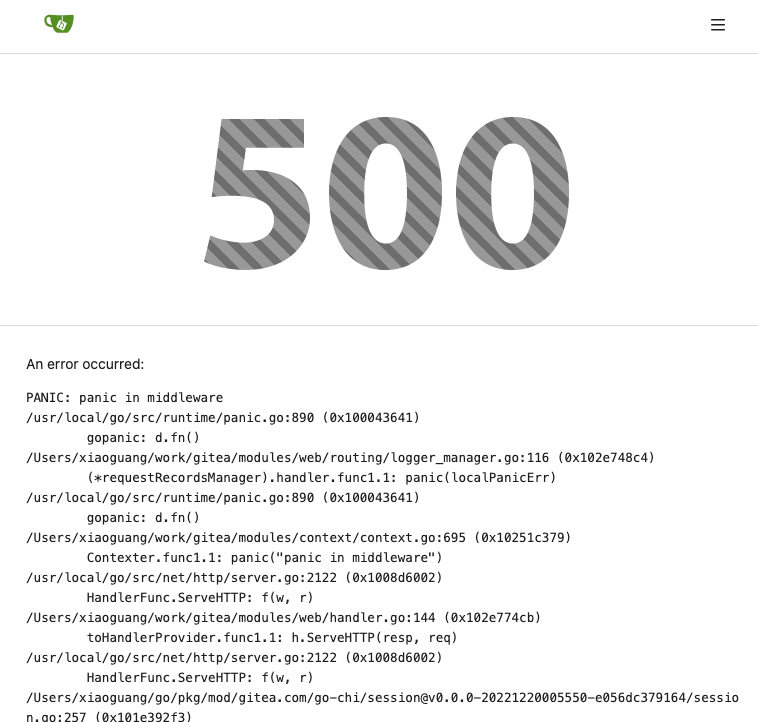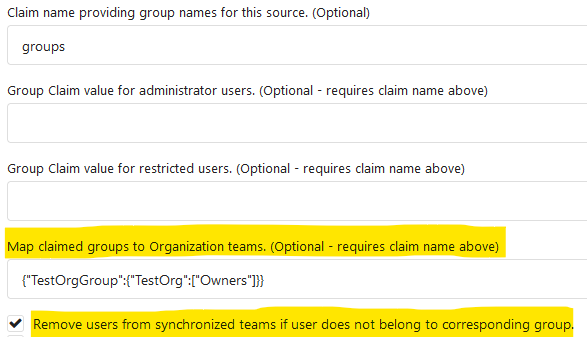The steps to reproduce it.
First, create a new oauth2 source.
Then, a user login with this oauth2 source.
Disable the oauth2 source.
Visit users -> settings -> security, 500 will be displayed.
This is because this page only load active Oauth2 sources but not all
Oauth2 sources.
Closes #27455
> The mechanism responsible for long-term authentication (the 'remember
me' cookie) uses a weak construction technique. It will hash the user's
hashed password and the rands value; it will then call the secure cookie
code, which will encrypt the user's name with the computed hash. If one
were able to dump the database, they could extract those two values to
rebuild that cookie and impersonate a user. That vulnerability exists
from the date the dump was obtained until a user changed their password.
>
> To fix this security issue, the cookie could be created and verified
using a different technique such as the one explained at
https://paragonie.com/blog/2015/04/secure-authentication-php-with-long-term-persistence#secure-remember-me-cookies.
The PR removes the now obsolete setting `COOKIE_USERNAME`.
When the user does not set a username lookup condition, LDAP will get an
empty string `""` for the user, hence the following code
```
if isExist, err := user_model.IsUserExist(db.DefaultContext, 0, sr.Username)
```
The user presence determination will always be nonexistent, so updates
to user information will never be performed.
Fix #27049
Part of #27065
This reduces the usage of `db.DefaultContext`. I think I've got enough
files for the first PR. When this is merged, I will continue working on
this.
Considering how many files this PR affect, I hope it won't take to long
to merge, so I don't end up in the merge conflict hell.
---------
Co-authored-by: wxiaoguang <wxiaoguang@gmail.com>
Bumping `github.com/golang-jwt/jwt` from v4 to v5.
`github.com/golang-jwt/jwt` v5 is bringing some breaking changes:
- standard `Valid()` method on claims is removed. It's replaced by
`ClaimsValidator` interface implementing `Validator()` method instead,
which is called after standard validation. Gitea doesn't seem to be
using this logic.
- `jwt.Token` has a field `Valid`, so it's checked in `ParseToken`
function in `services/auth/source/oauth2/token.go`
---------
Co-authored-by: Giteabot <teabot@gitea.io>
we refactored `userIDFromToken` for the token parsing part into a new
function `parseToken`. `parseToken` returns the string `token` from
request, and a boolean `ok` representing whether the token exists or
not. So we can distinguish between token non-existence and token
inconsistency in the `verfity` function, thus solving the problem of no
proper error message when the token is inconsistent.
close #24439
related #22119
---------
Co-authored-by: Jason Song <i@wolfogre.com>
Co-authored-by: Giteabot <teabot@gitea.io>
Fix #21072

Username Attribute is not a required item when creating an
authentication source. If Username Attribute is empty, the username
value of LDAP user cannot be read, so all users from LDAP will be marked
as inactive by mistake when synchronizing external users.
This PR improves the sync logic, if username is empty, the email address
will be used to find user.
1. The "web" package shouldn't depends on "modules/context" package,
instead, let each "web context" register themselves to the "web"
package.
2. The old Init/Free doesn't make sense, so simplify it
* The ctx in "Init(ctx)" is never used, and shouldn't be used that way
* The "Free" is never called and shouldn't be called because the SSPI
instance is shared
---------
Co-authored-by: Giteabot <teabot@gitea.io>
The plan is that all built-in auth providers use inline SVG for more
flexibility in styling and to get the GitHub icon to follow
`currentcolor`. This only removes the `public/img/auth` directory and
adds the missing svgs to our svg build.
It should map the built-in providers to these SVGs and render them. If
the user has set a Icon URL, it should render that as an `img` tag
instead.
```
gitea-azure-ad
gitea-bitbucket
gitea-discord
gitea-dropbox
gitea-facebook
gitea-gitea
gitea-gitlab
gitea-google
gitea-mastodon
gitea-microsoftonline
gitea-nextcloud
gitea-twitter
gitea-yandex
octicon-mark-github
```
GitHub logo is now white again on dark theme:
<img width="431" alt="Screenshot 2023-06-12 at 21 45 34"
src="https://github.com/go-gitea/gitea/assets/115237/27a43504-d60a-4132-a502-336b25883e4d">
---------
Co-authored-by: wxiaoguang <wxiaoguang@gmail.com>
Fix #24856
Rename "context.contextKey" to "context.WebContextKey", this context is
for web context only. But the Context itself is not renamed, otherwise
it would cause a lot of changes (if we really want to rename it, there
could be a separate PR).
The old test code doesn't really test, the "install page" gets broken
not only one time, so use new test code to make sure the "install page"
could work.
Replace #16455
Close #21803
Mixing different Gitea contexts together causes some problems:
1. Unable to respond proper content when error occurs, eg: Web should
respond HTML while API should respond JSON
2. Unclear dependency, eg: it's unclear when Context is used in
APIContext, which fields should be initialized, which methods are
necessary.
To make things clear, this PR introduces a Base context, it only
provides basic Req/Resp/Data features.
This PR mainly moves code. There are still many legacy problems and
TODOs in code, leave unrelated changes to future PRs.
Co-author: @pboguslawski
"registration success email" is only used for notifying a user that "you
have a new account now" when the account is created by admin manually.
When a user uses external auth source, they already knows that they has
the account, so do not send such email.
Co-authored-by: Giteabot <teabot@gitea.io>
Since the login form label for user_name unconditionally displays
`Username or Email Address` for the `user_name` field, bring matching
LDAP filters to more prominence in the documentation/placeholders.
Signed-off-by: Gary Moon <gary@garymoon.net>
Partially for #24457
Major changes:
1. The old `signedUserNameStringPointerKey` is quite hacky, use
`ctx.Data[SignedUser]` instead
2. Move duplicate code from `Contexter` to `CommonTemplateContextData`
3. Remove incorrect copying&pasting code `ctx.Data["Err_Password"] =
true` in API handlers
4. Use one unique `RenderPanicErrorPage` for panic error page rendering
5. Move `stripSlashesMiddleware` to be the first middleware
6. Install global panic recovery handler, it works for both `install`
and `web`
7. Make `500.tmpl` only depend minimal template functions/variables,
avoid triggering new panics
Screenshot:
<details>

</details>
> The scoped token PR just checked all API routes but in fact, some web
routes like `LFS`, git `HTTP`, container, and attachments supports basic
auth. This PR added scoped token check for them.
---------
Signed-off-by: jolheiser <john.olheiser@gmail.com>
Co-authored-by: Lunny Xiao <xiaolunwen@gmail.com>
This allows for usernames, and emails connected to them to be reserved
and not reused.
Use case, I manage an instance with open registration, and sometimes
when users are deleted for spam (or other purposes), their usernames are
freed up and they sign up again with the same information.
This could also be used to reserve usernames, and block them from being
registered (in case an instance would like to block certain things
without hardcoding the list in code and compiling from scratch).
This is an MVP, that will allow for future work where you can set
something as reserved via the interface.
---------
Co-authored-by: delvh <dev.lh@web.de>
Co-authored-by: John Olheiser <john.olheiser@gmail.com>
Close #24062
At the beginning, I just wanted to fix the warning mentioned by #24062
But, the cookie code really doesn't look good to me, so clean up them.
Complete the TODO on `SetCookie`:
> TODO: Copied from gitea.com/macaron/macaron and should be improved
after macaron removed.
In the `for` loop, the value of `membershipsToAdd[org]` and
`membershipsToRemove[org]` is a slice that should be appended instead of
overwritten.
Due to the current overwrite, the LDAP group sync only matches the last
group at the moment.
## Example reproduction
- an LDAP user is both a member of
`cn=admin_staff,ou=people,dc=planetexpress,dc=com` and
`cn=ship_crew,ou=people,dc=planetexpress,dc=com`.
- configuration of `Map LDAP groups to Organization teams ` in
`Authentication Sources`:
```json
{
"cn=admin_staff,ou=people,dc=planetexpress,dc=com":{
"test_organization":[
"admin_staff",
"test_add"
]
},
"cn=ship_crew,ou=people,dc=planetexpress,dc=com":{
"test_organization":[
"ship_crew"
]
}
```
- start `Synchronize external user data` task in the `Dashboard`.
- the user was only added for the team `test_organization.ship_crew`
None of the features of `unrolled/render` package is used.
The Golang builtin "html/template" just works well. Then we can improve
our HTML render to resolve the "$.root.locale.Tr" problem as much as
possible.
Next step: we can have a template render pool (by Clone), then we can
inject global functions with dynamic context to every `Execute` calls.
Then we can use `{{Locale.Tr ....}}` directly in all templates , no need
to pass the `$.root.locale` again and again.
When running listLdapGroupMemberships check if the groupFilter is empty
before using it to list memberships.
Fix #23615
Signed-off-by: Andrew Thornton <art27@cantab.net>
When there is an error creating a new openIDConnect authentication
source try to handle the error a little better.
Close #23283
Signed-off-by: Andrew Thornton <art27@cantab.net>
Co-authored-by: techknowlogick <techknowlogick@gitea.io>
minio/sha256-simd provides additional acceleration for SHA256 using
AVX512, SHA Extensions for x86 and ARM64 for ARM.
It provides a drop-in replacement for crypto/sha256 and if the
extensions are not available it falls back to standard crypto/sha256.
---------
Signed-off-by: Andrew Thornton <art27@cantab.net>
Co-authored-by: John Olheiser <john.olheiser@gmail.com>
To avoid duplicated load of the same data in an HTTP request, we can set
a context cache to do that. i.e. Some pages may load a user from a
database with the same id in different areas on the same page. But the
code is hidden in two different deep logic. How should we share the
user? As a result of this PR, now if both entry functions accept
`context.Context` as the first parameter and we just need to refactor
`GetUserByID` to reuse the user from the context cache. Then it will not
be loaded twice on an HTTP request.
But of course, sometimes we would like to reload an object from the
database, that's why `RemoveContextData` is also exposed.
The core context cache is here. It defines a new context
```go
type cacheContext struct {
ctx context.Context
data map[any]map[any]any
lock sync.RWMutex
}
var cacheContextKey = struct{}{}
func WithCacheContext(ctx context.Context) context.Context {
return context.WithValue(ctx, cacheContextKey, &cacheContext{
ctx: ctx,
data: make(map[any]map[any]any),
})
}
```
Then you can use the below 4 methods to read/write/del the data within
the same context.
```go
func GetContextData(ctx context.Context, tp, key any) any
func SetContextData(ctx context.Context, tp, key, value any)
func RemoveContextData(ctx context.Context, tp, key any)
func GetWithContextCache[T any](ctx context.Context, cacheGroupKey string, cacheTargetID any, f func() (T, error)) (T, error)
```
Then let's take a look at how `system.GetString` implement it.
```go
func GetSetting(ctx context.Context, key string) (string, error) {
return cache.GetWithContextCache(ctx, contextCacheKey, key, func() (string, error) {
return cache.GetString(genSettingCacheKey(key), func() (string, error) {
res, err := GetSettingNoCache(ctx, key)
if err != nil {
return "", err
}
return res.SettingValue, nil
})
})
}
```
First, it will check if context data include the setting object with the
key. If not, it will query from the global cache which may be memory or
a Redis cache. If not, it will get the object from the database. In the
end, if the object gets from the global cache or database, it will be
set into the context cache.
An object stored in the context cache will only be destroyed after the
context disappeared.
Fixes #19555
Test-Instructions:
https://github.com/go-gitea/gitea/pull/21441#issuecomment-1419438000
This PR implements the mapping of user groups provided by OIDC providers
to orgs teams in Gitea. The main part is a refactoring of the existing
LDAP code to make it usable from different providers.
Refactorings:
- Moved the router auth code from module to service because of import
cycles
- Changed some model methods to take a `Context` parameter
- Moved the mapping code from LDAP to a common location
I've tested it with Keycloak but other providers should work too. The
JSON mapping format is the same as for LDAP.

---------
Co-authored-by: Lunny Xiao <xiaolunwen@gmail.com>